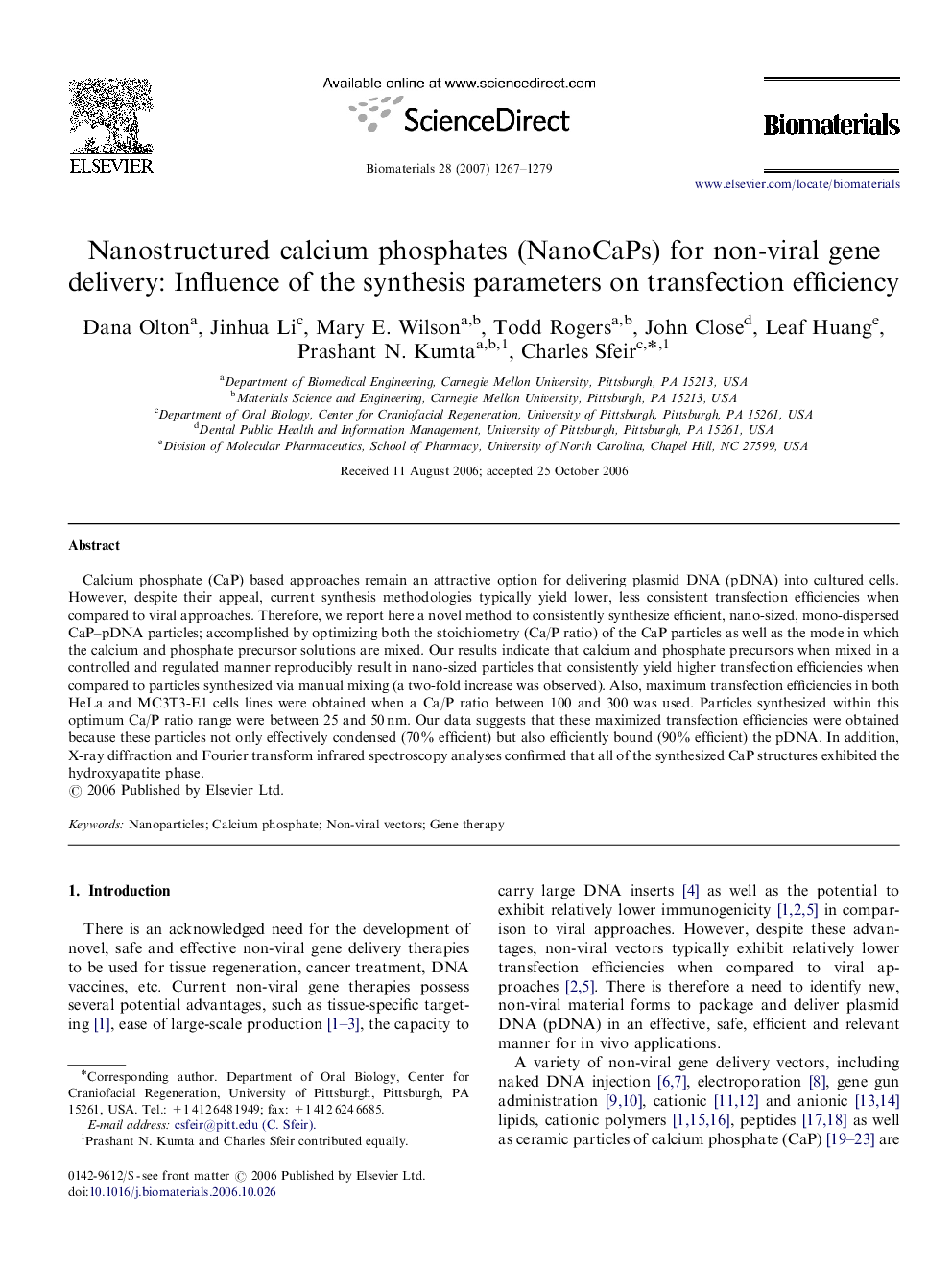| Article ID | Journal | Published Year | Pages | File Type |
|---|---|---|---|---|
| 10445 | Biomaterials | 2007 | 13 Pages |
Calcium phosphate (CaP) based approaches remain an attractive option for delivering plasmid DNA (pDNA) into cultured cells. However, despite their appeal, current synthesis methodologies typically yield lower, less consistent transfection efficiencies when compared to viral approaches. Therefore, we report here a novel method to consistently synthesize efficient, nano-sized, mono-dispersed CaP–pDNA particles; accomplished by optimizing both the stoichiometry (Ca/P ratio) of the CaP particles as well as the mode in which the calcium and phosphate precursor solutions are mixed. Our results indicate that calcium and phosphate precursors when mixed in a controlled and regulated manner reproducibly result in nano-sized particles that consistently yield higher transfection efficiencies when compared to particles synthesized via manual mixing (a two-fold increase was observed). Also, maximum transfection efficiencies in both HeLa and MC3T3-E1 cells lines were obtained when a Ca/P ratio between 100 and 300 was used. Particles synthesized within this optimum Ca/P ratio range were between 25 and 50 nm. Our data suggests that these maximized transfection efficiencies were obtained because these particles not only effectively condensed (70% efficient) but also efficiently bound (90% efficient) the pDNA. In addition, X-ray diffraction and Fourier transform infrared spectroscopy analyses confirmed that all of the synthesized CaP structures exhibited the hydroxyapatite phase.
